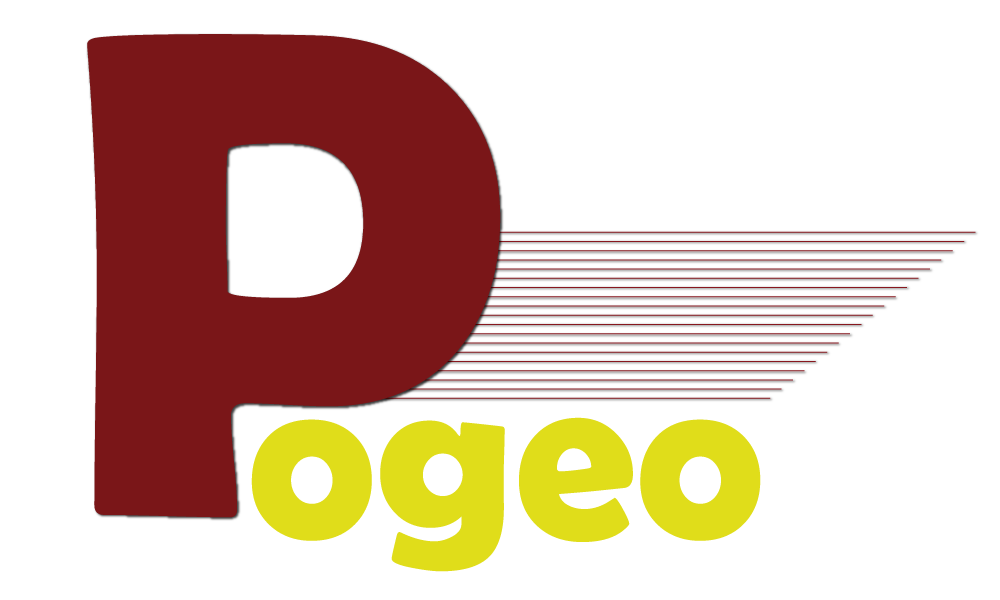The red carpet is a peculiar battlefield. You have seconds per subject, hostile mixed lighting from LED walls and broadcast panels, a dense press pen, and PR teams timing each stop. In 2025, the technical bar has risen again: global-shutter bodies entered the pit, anti-flicker tools mature, and portable strobes recycle faster than ever. Below is a pragmatic state-of-the-art: the kits that are genuinely earning day rates from Cannes to Venice, why they work, what they cost, and how to move files with bulletproof credits before the talent has cleared the step-and-repeat.
The bodies dominating the rope line
A minority of cameras actually make it onto red-carpet risers. In the UK and European circuits this year, four bodies are doing most of the heavy lifting:
- Sony A9 III (global shutter) — syncs flash at any shutter speed, shoots blackout-free up to 120 fps, and handles brutal LED signage without rolling-shutter artefacts. UK list sits around £5,799. For fast alternation between flash and available light, it’s the smoothest operator right now.
- Sony A1 II — a refined high-resolution flagship: 50 MP, 30 fps RAW and upgraded stabilisation/AF. Launch price was £6,300 in late-2024; still common among wire shooters who want 8K/30p and deep cropping latitude.
- Canon EOS R1 — Canon’s long-trailed pro mirrorless landed with a 24 MP sensor, 40 fps bursts, and high-frequency anti-flicker with the electronic shutter, which matters when an LED video wall sits behind talent. US street pricing is $6,799; UK dealers vary.
- Nikon Z9 — the agency-workhorse vibe continues: 45.7 MP stacked sensor, 20–120 fps options, superb AF and a High-Frequency Flicker Reduction mode for the nastiest LED panels. Typical UK body prices hover in the £3,200–£5,000 range depending on seller and condition.
Why this quartet? Because red carpets punish viewfinder lag, AF indecision and banding. Global shutter (A9 III) avoids stripes from electronic billboards and gives “any-speed” flash sync; when you’re fighting broadcast LEDs pulsing at 100/120 Hz, Canon’s and Nikon’s high-frequency anti-flicker tools let you micro-tune shutter speeds to kill bands without changing your look.
Glass that earns its keep
You’ll see the same three focal-length families on every riser. They’re predictable because they work.
- 24–70 mm f/2.8 (generalist, waist-up to full-length)
- Canon RF 24–70 mm f/2.8L IS USM: ~£2,420–£2,629.
- Nikon Z 24–70 mm f/2.8 S (Mk I): ~£1,346–£2,249 depending on retailer; the new Mk II with internal zoomis £2,599 RRP.
- Sony FE 24–70 mm f/2.8 GM II: £2,099 on Sony UK.
- 70–200 mm f/2.8 (tight portraits, isolating faces across the pit)
Prices vary by mount but expect roughly £2,200–£2,800 for current-gen pro zooms at UK dealers (check live listings). - Fast 135 mm (the red-carpet secret weapon)
- Canon RF 135 mm f/1.8L IS: ~£1,999–£2,400.
- Nikon Z 135 mm f/1.8 S “Plena”: ~£1,883–£2,206.
- Sony FE 135 mm f/1.8 GM: ~£1,284–£1,300 in current UK comparisons.
Why 135? At f/1.8 you cut a messy background (crew, microphones, exit signs) into elegant bokeh while keeping flattering perspective at a comfortable distance.
Light: from speedlights to battery strobes (and why physics still matters)
Red carpets are rarely truly “dark”. You get ambient from venue sconces, LED panels and video crews. The job is to control direction and consistency, not overpower everything.
- On-camera flashes (round-head)
- Godox V1 (all mounts): widely used for its price-to-output and a battery that survives a premiere; UK street ~£189–£248.
- Profoto A10: the premium option with superior light shaping and ecosystem; UK list ~£959.
- Off-camera, battery monolights
- Godox AD300 Pro (300 Ws): backpack-friendly, ~£423–£479 in the UK.
- Profoto B10X Plus (500 Ws): fast recycle, excellent modifiers; expect ~£2,094 per head.
Technique refresher (because the inverse-square law never went out of style):
Bring the light as close as PR will tolerate and modify it small-to-medium (round head with dome or a 30–60 cm softbox) to keep fall-off tight—enough to separate a face from the pattern-heavy backdrop but not so broad you light the publicist. A 1/8–1/4 CTO gel warms skin under cool LEDs; if an LED wall lives behind the subject, set WB manually and test for banding before talent arrives.
Flicker realities in 2025:
- Global shutter (A9 III) neutralises rolling-shutter skew and lets you pick any shutter speed with flash—handy when you want 1/1000 s to freeze confetti or rain.
- High-frequency anti-flicker (R1, Z9) micro-steps the shutter until stripes vanish; it’s the right move under PWM-driven panels where standard Anti-Flicker isn’t enough.
Data box — the pro market context (why prices feel punchy)
- Mirrorless shipments surged in 2023 to 118.6% of the prior year within ILC, per CIPA; manufacturers forecast steady volume into 2024–2025. That demand underpins firm pricing at the top end.
- 2025 monthly data show mirrorless up ~14% in units year-to-date (with compacts oddly buoyant), while DSLR continues to slide—another reason you see fewer mirrored bodies in pits.
Fieldcraft that still beats spec sheets
A little craft saves more frames than any spec bump. Put these into practice on your next festival:
- Prelight the patch — Ask PR for a 60-second stand-in before arrivals. Tune anti-flicker or variable shutter and lock your WB for the LED wall colourway of the night.
- Focus discipline — AF-C with face/eye is standard, but don’t be shy about switching to a single flexible point when sunglasses/hats confuse detection; pre-focus to the tape on the carpet.
- Work the flow — You’ve got three micro-moments per person: approach (three-quarter), mark (clean portrait), exit (over-shoulder). Build a shot list for editors: wide establishing, duo, single, detail (jewellery, couture label).
- Metadata or it didn’t happen — Bake IPTC captions, people and licensing on ingest; it’s the only way desks can move your frames without emailing you at midnight. Enable Content Credentials if your client wants provenance attached to exports.
Workflow & delivery: fast files, clean credits, social cut-downs
Picture desks live on speed. Aim for first selects within ten minutes of lead talent hitting the mark.
- Ingest & selects — Dual bodies, dual slots; tether over Ethernet or drop cards to a runner. Tag three stars on camera for your first burst to editors.
- Captioning — Use a boilerplate with placeholders for event name, venue, city and wardrobe credit; fill on import. IPTC templates save minutes per batch.
- Provenance — If the client cares about authenticity, export with Content Credentials so the newsroom (or brand) can surface the little “Cr” badge in compatible viewers.
Quick social deliverables (where a photo combiner pays off):
In the middle of a premiere, comms teams often need a four-panel grid for Instagram, a horizontal banner for X, or a vertical story with credits.
- Use a lightweight photo combiner layout to merge your hero, a close detail and two supporting frames; keep gutters narrow and type small.
- When handling multiple looks from the same celebrity, a photo combiner approach lets you deliver a coherent “mini-story” while the wire pushes singles.
- If you’re short on time, templates in Adobe Express are a lifesaver for on-brand grids and lower-thirds; export sRGB JPEGs at platform-native sizes. Pair that with your photo combiner grid and you’ll satisfy PR without missing the next arrival.
Kit shortlists by budget (street-realistic, UK-leaning)
Premium (agency/wire)
- Body: Sony A9 III or Canon R1 / Sony A1 II
- Glass: 24–70 / 2.8, 70–200 / 2.8, 135 / 1.8
- Light: Profoto A10 on-camera + B10X Plus off-camera pair
- Expect ~£12–17k all-in new, depending on mount and discounts.
Pro on a sensible spend
- Body: Nikon Z9 (or Z8 as a lighter backup)
- Glass: Z 24–70 / 2.8 S, Z 70–200 / 2.8, Z 135 / 1.8 Plena (hire when needed)
- Light: Godox V1 + AD300 Pro with a 60 cm softbox
- Expect ~£6–9k depending on lens choices and whether you buy used.
Starter who occasionally covers premieres
- Body: any current 24–33 MP mirrorless with strong AF
- Glass: 24–70 / 2.8 + an 85 / 1.8 (or rent a 70–200 for big nights)
- Light: Godox V1, bounce if ceilings allow; keep a small collapsible softbox for outdoor risers.
Troubleshooting the nasty stuff (so you don’t lose a look)
- LED banding on the backdrop → On Sony/Canon/Nikon bodies, turn on Anti-Flicker or Variable/High-Frequency anti-flicker and micro-nudge shutter speed until stripes disappear. If you’re on A9 III with flash, use any shutter speed to break sync with PWM flicker.
- Harsh hotspot on foreheads → Drop flash exposure comp −0.3 to −0.7 EV, feather the head, or add a dome; raise ISO one stop to keep ambient alive and soften ratios.
- Busy background → Step half a metre forward and shoot the 135 / 1.8 near wide-open; you’ll clean the scene without begging for a clear patch.
- Glare from glass awards → Quarter-turn polariser (if you can spare the light) or shift your angle 5–10°; avoid square-on flash to acrylic plinths.
Prices at a glance (UK typical, October 2025)
- Sony A9 III body: £5,799 (Sony UK).
- Sony A1 II body: ~£6,300 list at launch (TechRadar); varies by dealer today.
- Canon EOS R1 body: $6,799 (B&H at launch).
- Nikon Z9 body: ~£3,229–£4,999 depending on retailer/new vs used.
- Profoto A10: ~£959. Godox V1: ~£189–£248.
- Profoto B10X Plus: ~£2,094 each. Godox AD300 Pro: ~£423–£479.
- Canon RF 135 / 1.8L: ~£1,999–£2,400; Nikon Z 135 / 1.8 Plena: ~£1,883–£2,206; Sony FE 135 / 1.8 GM: ~£1,284–£1,300.
(Always sanity-check festival house rules: some carpets limit light stands, large modifiers or remote flashes. When in doubt, keep it on-camera and compact.)
Key takeaways
- Beat flicker before arrivals. Set anti-flicker (R1/Z9) or exploit global shutter (A9 III) and test against the LED wall that will be in your background all night.
- Carry the holy trinity plus a 135. 24–70 for context, 70–200 for faces, a fast 135 for glamour. Prices are high because mirrorless demand remains robust—budget for it or rent.
- Light with intent, not brute force. A round-head speedlight will solve most carpets; add a 300–500 Ws strobe only when space and rules allow.
- Ship fast with provenance. Solid IPTC captions and optional Content Credentials keep desks and brands happy—and protect your byline in a year that cares about authenticity.
If you can only change one thing before your next festival, make it this: build a photo combiner template and a metadata preset now. When the moment arrives, you’ll deliver a clean grid and correctly captioned singles in minutes—and still be ready for the next A-lister to hit the tape.


